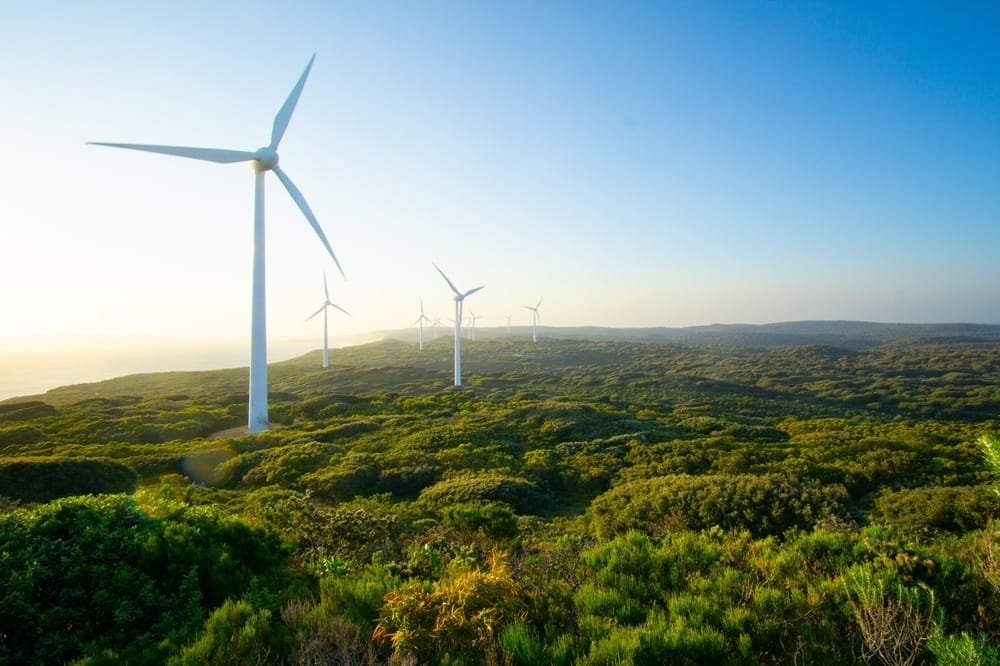Citicore Wind Energy Corp. (CWEC), a subsidiary of Citicore Renewable Energy Corp. (CREC), is scaling back its proposed wind project in Pangasinan to a planned capacity of 80 megawatts (MW).
According to a disclosure filed by CREC, the development, estimated to cost P9.6 billion, targets completion by the first quarter of 2028.
The company did not elaborate on the reason behind the project’s reconfiguration. CWEC had initially proposed a 150-MW installation in its submission to the Department of Environment and Natural Resources (DENR).
(Also read: Benguet Electric Cooperative’s Franchise Up for Presidential Sign-Off)
Project specifications
CWEC identified the towns of Sual and Labrador in Pangasinan as ideal locations for wind energy development, citing steady wind patterns that support efficient power production. The company also noted that the sites offer ample land with low environmental impact and proximity to existing transmission lines, allowing for easier grid connection and reduced infrastructure challenges.
The Pangasinan wind project was among the winning bids in the second round of the government’s Green Energy Auction held in 2023. That same year, 13 of CREC’s renewable energy projects were declared nationally significant—an endorsement that streamlines regulatory approvals and fast-tracks development timelines.
CWEC secured exclusive development rights for the project under a Wind Energy Service Contract (WESC) awarded by the Department of Energy (DOE) on November 30, 2024.
Aimed at curbing carbon emissions and boosting local development, the wind project is expected to tap the economic potential of the highland areas in Sual and Labrador. Initial community consultations reflected strong support, particularly for the socioeconomic benefits the project could bring.
The initiative also stands to gain from a favorable policy landscape, with wind energy development aligned with the Philippines’ broader push for energy independence, reduced emissions, and a net-zero future.
“The project is anticipated to provide clean electricity and local employment opportunities during its pre-construction, construction, and operational stages,” CWEC stated. “Additionally, it seeks to reduce the Philippines’ dependence on fossil fuel energies and mitigate the impacts on climate change.”
Once operational, the facility is expected to bolster Luzon’s power supply and help drive down electricity costs and stimulate demand.
Backed by global investor Actis, Singapore-based Levanta Renewables joined forces with CREC in October 2024 to pursue the development and operation of onshore wind projects totaling 375 MW in capacity.
(Also read: ACEN Expands Northward with First Solar Venture in Cagayan)
CREC at a glance
CREC oversees a broad mix of renewable energy assets through its subsidiaries and joint ventures, spanning solar, hydro, and wind platforms.
As part of its growth strategy, CREC earlier announced plans to integrate battery energy storage systems into its solar projects. These systems are designed to store surplus electricity and release it when demand spikes, helping to stabilize the grid.
Signaling its push for large-scale renewables, CREC allocated over $1 billion in capital expenditures for 2024, with most of the funding directed toward its first gigawatt (GW) of solar power developments before 2025 ends.
CREC currently operates 10 solar power facilities across the Philippines, delivering a total installed capacity of 285 MW. Despite its modest footprint, the company has set its sights on a major expansion, aiming to grow its renewable portfolio to five GW by 2028.
Sources:
https://business.inquirer.net/533372/crec-to-invest-p9-6b-in-80-mw-pangasinan-wind-facility

